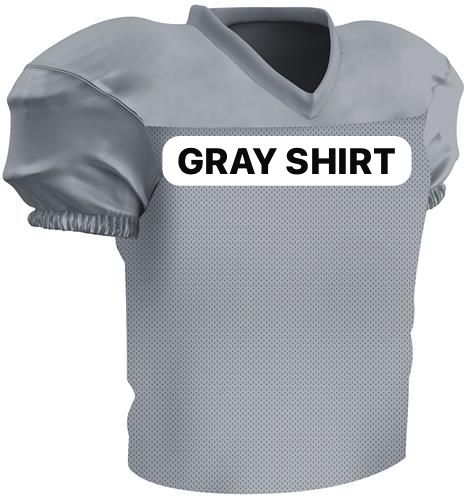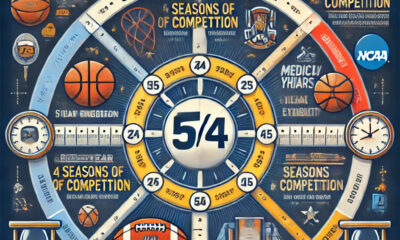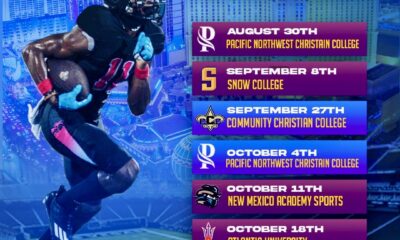
The terms “Post Grad” and “Gray Shirt” are often used in the context of football recruiting, especially when discussing players who are looking to further develop their skills and gain exposure before moving on to collegiate or professional play. While they both serve as developmental opportunities for athletes, they differ significantly in terms of structure, timing, and the purpose of the experience. Let’s break down the differences:
Post-Graduate (Post-Grad) Year
A post-graduate year refers to an extra year of high school eligibility that an athlete can choose to take after their high school graduation. This is often done at a specialized prep school or academy in a traditional or non-traditional setting. Post-graduate programs are especially common in sports like football, basketball, baseball and soccer, as they provide athletes with more time to develop their skills and increase their recruiting opportunities.
Key Characteristics of Post-Grad:
– Purpose: A post-grad year is primarily focused on athletic and some academic development, exposure, and college recruitment. It allows athletes to compete at a higher level of competition (often at the prep school level), improving their chances of securing a scholarship or moving on to professional opportunities.
– Age/Eligibility: Typically, players are 18 or 19 years old when they enter a post-grad year. They have already graduated from high school, but they are not yet enrolled in college or university. Since it’s not part of the NCAA or NAIA eligibility rules, players can take this year without losing eligibility for college sports.
– Location: Post-grad athletes usually attend prep schools or post-grad academies which are located in different parts of the country. The vast majority of the football post grad programs are located in the southeast parts of the US. These schools typically have football programs that play a competitive schedule against other prep schools, junior colleges, or community colleges.
– Outcome: The goal of a post-grad year is usually to improve a player’s skills, gain more exposure, and increase their chances of receiving college scholarship offers or being recruited to play at higher levels (like the Division 1 or FBS Levels). Some players may also use this year to get bigger, stronger, or more refined in their position.
Pros of a Post-Grad Year:
– Develop skills and increase visibility to recruiters.
– Compete in a higher-level environment than high school.
– Improve physicality, maturity, and mental toughness.
– Opportunity to earn scholarships or enter the professional ranks.
– Opportunity to gain a jump start on college course work and academic studies
Gray Shirt
A gray shirt is a term used in NCAA athletics, particularly football, to describe a player who delays enrollment in college for a semester or even a full year after committing to a school. Essentially, it’s a way of giving a player an extra year to develop, often by staying out of the team’s immediate active roster and waiting to enroll in the next available semester.
Key Characteristics of Gray Shirt:
– Purpose: The gray shirt is used when a player has committed to a college or university but won’t start playing or attending immediately. The player could either take time to recover from an injury, work on physical development, or use the time to gain more exposure. The “gray shirt” status essentially means the player is not immediately playing or participating in team activities.
– Timing: A player who gray-shirts typically enrolls in college after the initial semester of the academic year has started, which allows the team to save a scholarship for the following year. Some players gray-shirt to physically mature or gain an extra year of eligibility, as the clock on NCAA eligibility usually starts once, they are enrolled in classes full time and take part in official practices.
– Eligibility: A gray-shirt player does not lose a year of eligibility but may have their first year of eligibility delayed until the following season (or semester). It’s a strategic move for players who may not be ready to compete at the collegiate level immediately, but who still want to attend college on a scholarship.
– Location: The gray-shirt process happens at the college level, not during a player’s time in high school or at a prep academy. A player who gray shirts still eventually attends and plays at the college they’ve committed to, but with a delayed start.
Pros of Gray-Shirting:
– Delays the start of the eligibility clock, giving the player more time to develop.
– Allows the athlete to improve physically, mentally, or academically.
– Provides an opportunity to redshirt the first season without losing a scholarship.
– Can lead to more playing time once the player is ready.
Cons of Gray-Shirting:
– The player is not actively playing in games during the delayed semester.
– The player may have to attend a different institution for a semester before transferring to the university they’ve committed to (depending on the NCAA rules and school policies).
Post-Grad vs. Gray Shirt: Key Differences
|
Aspect |
Post-Grad |
Gray Shirt |
|
Timing |
After high school graduation, before college. |
After committing to a college, before enrolling. |
|
Purpose |
To develop athletic skills and increase recruitment opportunities. |
To delay the start of eligibility while staying on scholarship. |
|
Location |
Attends a prep school or post-grad academy. |
Stays committed to a college but does not enroll or participate in sports immediately. |
|
Eligibility |
Does not impact NCAA eligibility (unless playing in a non-prep league). |
Delays the start of the eligibility clock, giving an athlete more time to develop. |
|
Competition Level |
Competes in high-level prep or academy football. |
Practices with the team but doesn’t compete during the first semester or season. |
|
Outcome |
Increases recruitment opportunities and college scholarship offers. |
Allows a player to physically mature and compete later while saving a year of eligibility. |
Which is Better for a Player?
– Post-Grad Year: A post-grad year is ideal for players who have completed high school and are looking for more exposure and development before committing to college football. If a player feels they need more time to develop their skills, build their body, or improve their academic profile, a post-grad year at a prep school or academy can be a great opportunity.
– Gray Shirt: A gray shirt is better suited for players who have already committed to a college and want to delay their enrollment for a semester to get bigger, faster and stronger, or recover from an injury. It’s also ideal for players who want to ensure they’re fully prepared before joining a college football program and starting their eligibility clock.
In the end, it depends on where a player is in their journey and what their development needs are. If they’re looking for a more competitive, exposure-driven environment, a post-grad year might be the right choice. If they’re already committed to a college and want to gain an extra year to prepare, the gray-shirt route could be a good option.


Must See
-


Academics
/ 1 year agoBreaking down the college 5/4 rule and benefits it has after attending a Post Grad Sports Academy
What is the College NCAA 5/4 rule
By PWPGC
 ad code here
ad code here Title
-


Football
/ 5 months agoPacWest Post Grad Conference Kicks Off with Inaugural 2025 Football Season Schedule for Perazen Elite Prep Academy
The stage is set for an electrifying debut as the PacWest Post Grad Conference...
By PWPGC -


Academics
/ 10 months agoPost High School program provides an opportunity to advance your college sports career!
The PacWest Post Grad Conference offers student-athletes an exceptional opportunity to gain exposure through...
By PWPGC





